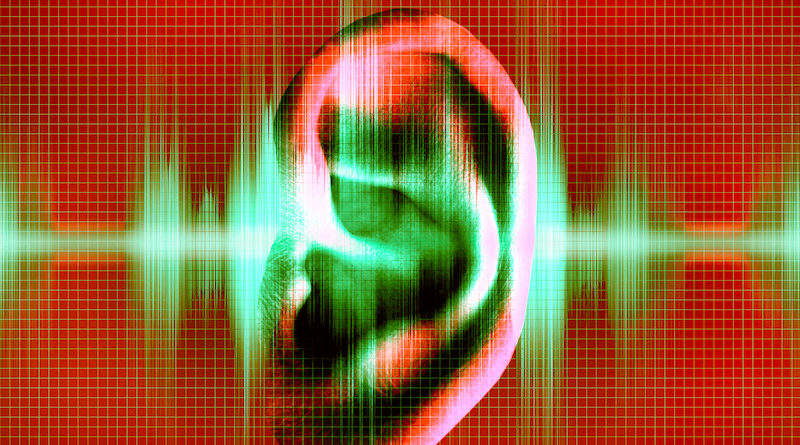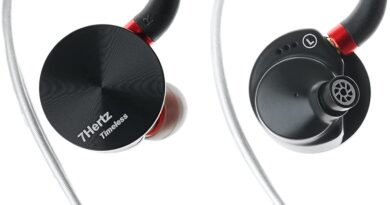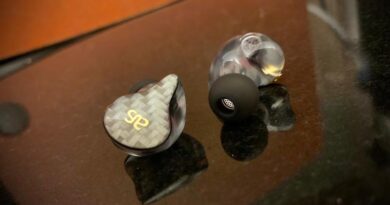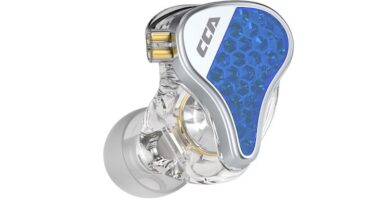Chi-Fi Tuning – Why It Sounds So Damn Piercing To Western Ears?
[Reading time: approximately 5 minutes]
This subject came to me one day when I was replying Sunil’s comment on “Tuning The KBEAR Diamond – A Killer Earphone Ready To Go!” on Audioreviews.org. What set me thinking was the fact that many audiophiles are still vastly unfamiliar with Chi-Fi (China Hifi) tuning. Why are Chi-Fi earphones tuned in a certain way? Is there anything a tuner could do to tweak the sound to suit the western ears more? Without going too technical, I will try my best to explain the rationale behind them.
First of all, we must understand the cultural differences. You see, the term “audiophile” or fever enthusiast (“发烧友” in Chinese) did not exist until the end of last millennium. Before that, most Mainlanders were still very poor. Many were labourers, factory workers, miners and farmers, etc. High-fidelity audio enjoyment was the last thing in their minds. Trying to make ends meet in their livelihoods was top priority. Even if the Mainlanders have access to a decent piece of audio equipment, it would cost them an arm and leg, or worst – got thrown into jail. You see, the equipment acquired were probably smuggled from Hong Kong, costing 4 to 5 times its original retail price in the former British colony. Only the very wealthy land-owners, factory-owners, traders, merchants and high government officials could afford such luxury and avoid prosecution.
So, what has this got to do with Chi-Fi tuning? Plenty! You see, most Mainlanders who grew up in that era had never experienced or heard a decent-sounding piece of audio equipment. Foreign Hi-Fi gears were extremely rare. Their domestic “HiFi” products were still largely based on circuitry cloned from well-known foreign brands (such as vintage Western Electric, RCA, Telefunken, Marantz, etc), using inferior components that were poorly implemented and heavily compromised (off-specs).
Loudspeakers from those days were based on front-loaded horn designs, using horn transducers dated back to the 50s and 70s (yes, many of those horn speakers were previously used in public address systems or emergency warning systems). Folks who have experienced or have used horn speakers in the past can relate their blaring sound to Chi-Fi tuning (both eerily similar).
Besides equipment, one of the most obvious reason is recorded music. Mainland China then did not have access to music from other Chinese-speaking territories such as Hong Kong or Taiwan. In fact, many songs were banned because the lyrics were deemed inappropriate to the communist doctrine and ideology. If you have ever heard Mainland Chinese recordings dated back 30-40 years ago, they were shouty, harsh and ear-piercing (plenty examples on YouTube). Why such tonality? The idea is high-pitched sound brings attention and awareness effectively. Imagine the loud shriek from your wife, girlfriend, sister or mother, etc, trying to capture your attention.
Today, the age demographics of many Chi-Fi bosses are in their late 20s, early 30s. Owners of KZ and Yinyoo are in their early 30s. Owner of TRN in his late 20s. That means these folks had their childhood in the 1980s and 1990s, which matches our earlier observations perfectly. They grew up listening to equipment that was less than optimum, with sound that resembles those playing from front-loaded horn loudspeakers. Many of them cannot relate to warm and mellow tones. In fact, they consider such tonality muddy and lacks clarity.
As a tuner for Chi-Fi earphone manufacturers, I often encounter difficulties and frustrations trying to convince their management and engineers to accept a certain tone or sound characteristics. They are judging my tuning based on their own experiences of how “good sound” should be represented. They cannot understand why “blurry and unclear” (in their own vocabulary – “模糊不清”) sound would appeal to the westerners. For earphones that are both sold domestically and exported, I have to tune for both the Mainland and western consumers. Therefore it isn’t easy striking a balance between the two audiences.
Do take note that Chi-Fi earphone manufacturers will ALWAYS place top priority on domestic and territories sales (which includes Hong Kong and Taiwan). Next comes Japan, Korea, Russia and Southeast Asia. North America and Europe are at the bottom of their priority list. Ironically, both western markets have the most influence on the buying decisions of many earphone enthusiasts around the world. Trying to convince Chi-Fi manufacturers to accept tuning that suits the western ears is never an easy task. Often times they will partially tweak or simply proceed with their own tuning preferences without acknowledging the tuner.
Can tuners do anything to change or improve the situation? Frankly no… Their management and engineers have the ultimate say to how their earphones should sound. Do tuners care? Yes, of course we care. Imagine tuners as teachers. When students don’t do well in their exams, it upsets the teachers. Same sentiment…
Back to Sunil’s comment. He wrote – “It is only the good ear that is able to catch good audio quality and it does not depend on whether it is western or eastern…” – I have to disagree. I am sure these Chi-Fi manufacturers have exceptional “ears”, but whether their “ears” could agree with western interpretation of “good sound” is another chapter. What constitute as “good sound” is subjected to cultural background, individual upbringing and personal experience. As tuners, we can only try our best bring out the best from the available drivers to make them sound as appealing to every human ears as possible, regardless of race, culture or locality.
On a positive note, I have personally witnessed tremendous improvement in the tuning of many Chi-Fi products (not just earphones) in the past 2-3 years. This is due to an increased wealth among middle-class Mainlanders, thus more of them are exposed to top-tier, high-quality foreign brand audio products. Slowly but gradually, they have got the opportunity to experience audio gears from around the world. This makes it a bit easier for tuners to convince Chi-Fi manufacturers to accept western tuning. As a result, more Chi-Fi products suitable for western ears are released (such as BLON, Tanchjim, Moondrop, Fearless and Tansio Mirai, etc). This is an ongoing trend I have observed. Expect more exciting Chi-Fi products in 2020 and beyond!





Further Reading







Congrats 😊 A nice explanation. I would add the factor of biological & social genetics to the writing.
Their ancestors for a thosand or two years were mainly peasants under a particular ruler and free will (and choices) were simply non existant. Punished too.
So this continued for around 100 generations. But now they began to see and live the opposite. Some became very rich and spoiled youngsters (2nd gen are called fuerdai) some majority became decent folks. And this “decent” guys are slowly dissolving the chinese preference for sounds.
I experienced the harsh tuning in a department store in Chengdu, Sichuan Province, between 2003 and 2010. The store rented out spaces to small dealerships for demos…and their monstrous Hifi speaker towers emitted torturing noises.
Sichuan is home to 55 ethic groups. Among them, half are from mountain tribes, the other half are from grasslands and plateaus. High-pitch, high-decibel calls and singings are common in such large land mass. Same applies to their loudspeakers demonstration.
Very informative article.
Hi,
Great article !
IMO it’s cultural only.
I’m french and I prefer the neutral-bright signature, which is not particularly common.
Maybe is it because I prefer a studio reference sound (Pro) than a fun sound (Hi-fi ?).
I suspect a lot of famous youtubers prefer Harman curve and even darkish sound signature.
I’m perfectly happy with my Zero Audio Zirco Pezzo, Dunu Titan 1es, Senfer DT6/6in1xba/UesPro.
My own bias is that I consider that there are to kind of audiophiles : the one that cannot stand Grado headphones, and of course the one that can stand them, a lot.
Maybe asians founded their sound signature based on products of the west like Grado headphones ?
You are true as Huawei sound X is bad to jbl boombox 3 , the lack bass and rock stage which I can detected with instant . But jbl which is the good audiophiles with Harman audio partner and I need to tune it with Harman audio curve and myself curve to hit the perfect audio.